Instructions for Side by Side Printing
- Print the notecards
- Fold each page in half along the solid vertical line
- Cut out the notecards by cutting along each horizontal dotted line
- Optional: Glue, tape or staple the ends of each notecard together
A&P Chapter 8 Joints
front 1 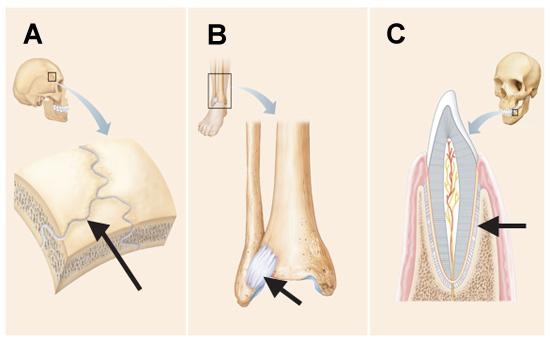 Which of these joints would be functionally classified as diarthrotic? | back 1 None of the listed responses is correct. |
front 2 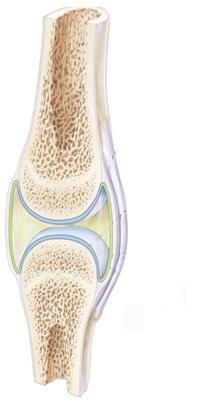 The generalized model for the structural type of joint illustrated shares the LEAST number of features with which of the following? | back 2 intervertebral joint |
front 3 Drag the appropriate labels to their respective targets. | back 3 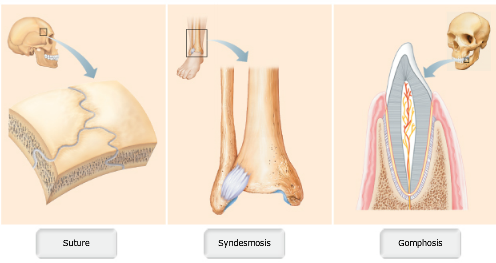 |
front 4 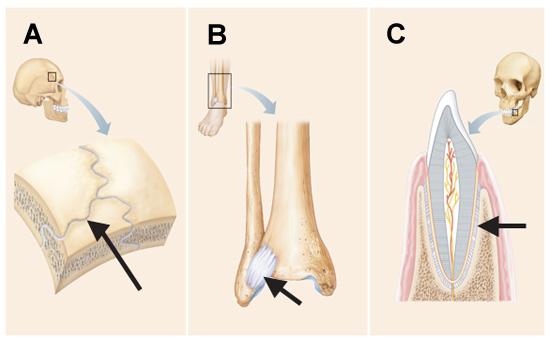 Which of the following is true regarding the structure indicated by the arrow in the joint depicted in A? | back 4 It becomes ossified late in adult development. |
front 5 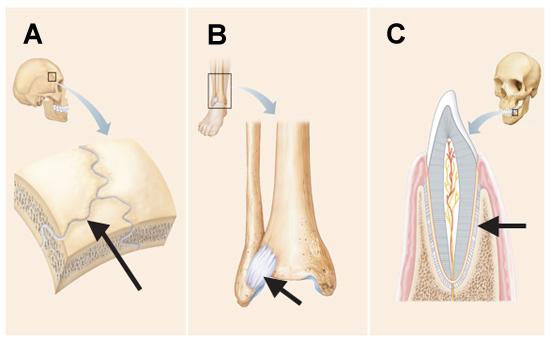 The arrows in B and C point to structures that can both be described as a ______. | back 5 ligament |
front 6 Drag the appropriate labels to their respective targets. | back 6  |
front 7 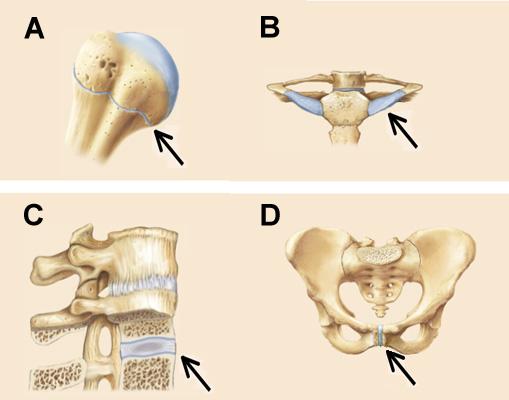 Which of the joints will eventually develop into a synostosis? | back 7 A |
front 8 Drag the appropriate labels to their respective targets. | back 8 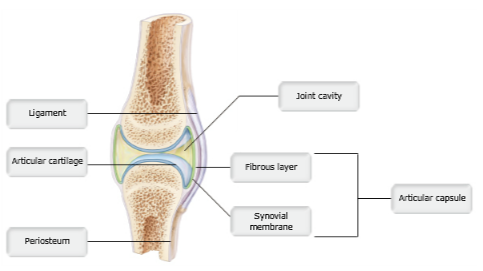 |
front 9 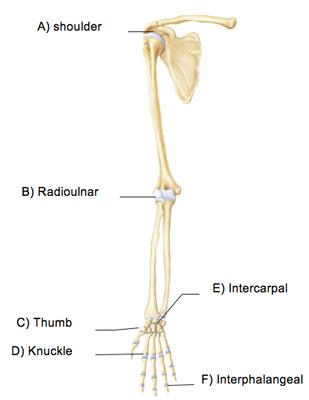 Which of the following is a hinge joint? | back 9 F |
front 10 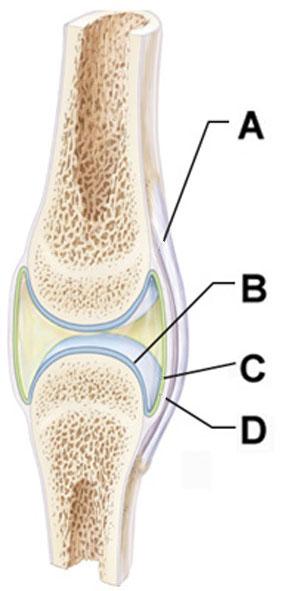 Which structure is composed primarily of dense irregular connective tissue? | back 10 D |
front 11 Functional classification of joints is based on ________. | back 11 the amount of movement allowed by the joint |
front 12 Which of the following does NOT represent a structural classification of joints? | back 12 diarthrosis |
front 13 Articulations permitting only slight degrees of movement are ________. | back 13 amphiarthroses |
front 14 Synarthrotic joints ________. | back 14 permit essentially no movement |
front 15 The amount of movement permitted by a particular joint is the basis for the functional classification of joints. | back 15 True |
front 16 All joints permit some degree of movement, even if very slight. | back 16 False |
front 17 The structural classification of joints is based on the composition of the binding material and the presence or absence of a joint cavity. | back 17 True |
front 18 Fibrous joints are classified as ________. | back 18 sutures, syndesmoses, and gomphoses |
front 19 Which of the following statements defines synchondroses? | back 19 cartilaginous joints where hyaline cartilage unites the ends of bones |
front 20 Which of the following is one difference between bursae and tendon sheaths? | back 20 Bursae are flattened fibrous sacs wedged between adjacent structures, while tendon sheaths are elongated fibrous sacs that wrap around tendons. |
front 21 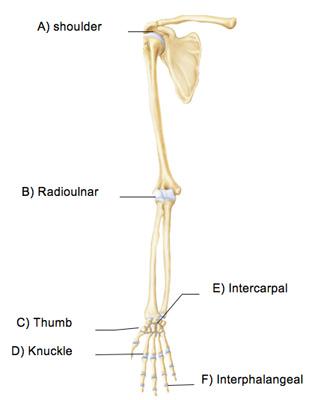 The thumb joint indicated by C mediates which of the following special movements? | back 21 opposition |
front 22 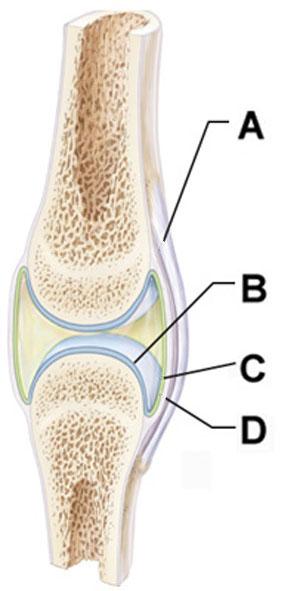 Which structure is composed primarily of dense irregular connective tissue? | back 22 D |
front 23 Connective tissue sacs lined with synovial membranes that act as cushions in places where friction develops are called ________. | back 23 bursae |
front 24 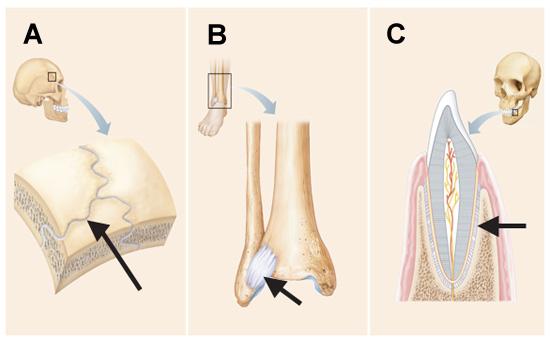 All three joints in the below figure are classified as ______. | back 24 fibrous joints |
front 25 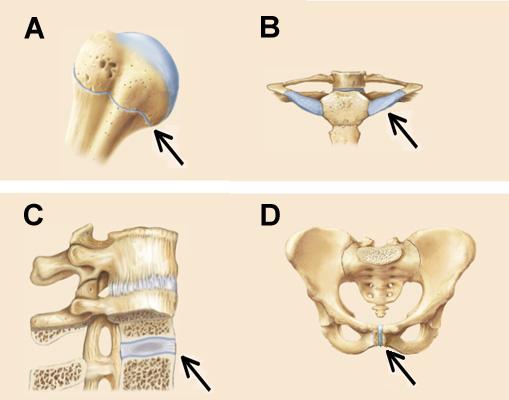 Which of the joints will eventually develop into a synostosis? | back 25 A |
front 26 A fibrous joint that is a peg-in-socket is called a ________ joint. | back 26 gomphosis |
front 27 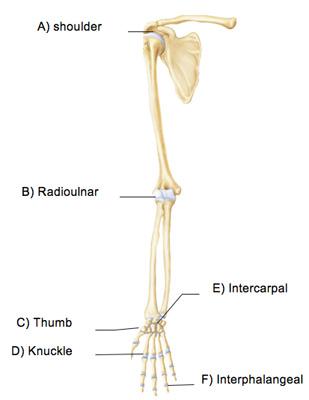 Which joint in the above figure is limited to nonaxial gliding movements? | back 27 E |
front 28 Pointing the toes is an example of ________. | back 28 plantar flexion |
front 29 Saddle joints have concave and convex surfaces. Identify the saddle joint of the skeleton. | back 29 Carpometacarpal joint of the thumb. |
front 30 Which of the following is NOT a structural feature of synovial joints? | back 30 bone ends united by fibrocartilage |
front 31 Which of the following does NOT represent a structural classification of joints? | back 31 diarthrosis |
front 32 Which of the following is a true statement regarding gliding movements? | back 32 Gliding movements occur at the intercarpal and intertarsal joints. |
front 33 The structural classification of joints is based on the composition of the binding material and the presence or absence of a joint cavity. | back 33 True |
front 34 Bending your head back until it hurts is an example of ________. | back 34 hyperextension |
front 35 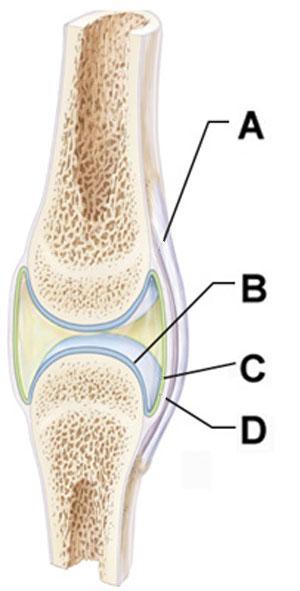 Structure C and D collectively form which of the following? | back 35 articular capsule |
front 36 The shoulder and hip are examples of ________. | back 36 ball-and-socket joints |
front 37 The terms inversion and eversion pertain only to the ________. | back 37 feet |
front 38 Articulations permitting only slight degrees of movement are ________. | back 38 amphiarthroses |
front 39 In a sprain, the ________ of a joint are stretched or torn. | back 39 ligaments |
front 40 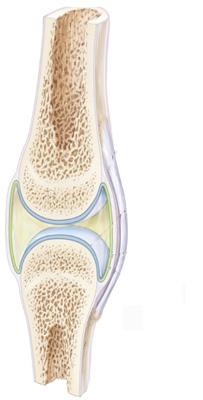 Which of the following terms describes the functional classification of the illustrated joint with regard to its range of movement? | back 40 diarthrotic |
front 41 Which of the following is NOT a factor that contributes to joint stability? | back 41 amount of synovial fluid in the joint cavity |
front 42 Synovial fluid does NOT ________. | back 42 prevent the articulating bones from dislocating |
front 43 The hip joint is a good example of a(n) ________ synovial joint. | back 43 multiaxial |
front 44 Functional classification of joints is based on ________. | back 44 the amount of movement allowed by the joint |
front 45 Which joint has sacrificed stability to provide great freedom of movement? | back 45 shoulder |
front 46 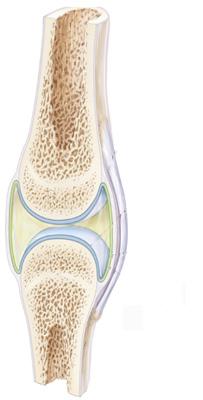 Which of the following terms describes the functional classification of the illustrated joint with regard to its range of movement? | back 46 diarthrotic |
front 47 Functional classification of joints is based on ________. | back 47 the amount of movement allowed by the joint |
front 48 All joints permit some degree of movement, even if very slight. | back 48 False |
front 49 Which movement increases the angle between articulating bones? | back 49 extension |
front 50 In the classification of joints, which of the following is true? | back 50 All synovial joints are freely movable. |
front 51 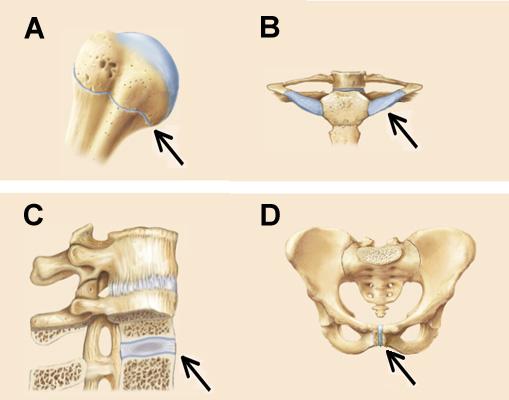 Which of the joints will eventually develop into a synostosis? | back 51 A |
front 52 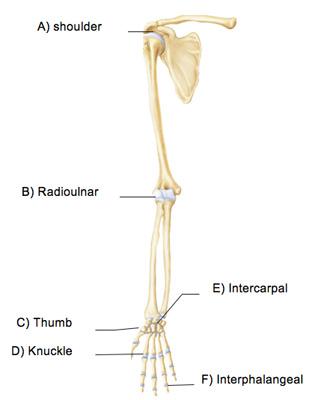 The thumb joint indicated by C mediates which of the following special movements? | back 52 opposition |
front 53 Which ligament would one tap to generate the knee-jerk reflex? | back 53 patellar ligament |
front 54 Which of the following is CORRECTLY paired? | back 54 multiaxial movement: movement in all three planes and around all three axes |
front 55 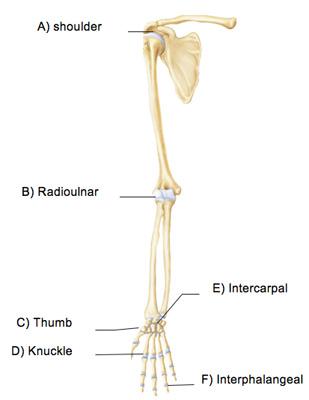 Which joint in the above figure is limited to nonaxial gliding movements? | back 55 E |
front 56 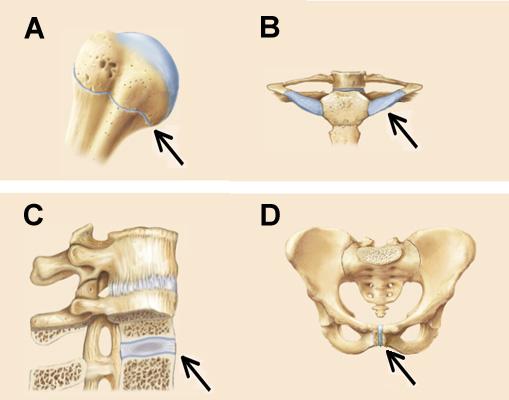 The joints indicated by the arrows in C and D are distinguished from those indicated in A and B by the presence of which of the following tissues? | back 56 fibro-cartilage |
front 57 Saddle joints have concave and convex surfaces. Identify the saddle joint of the skeleton. | back 57 Carpometacarpal joint of the thumb. |
front 58 Pointing the toes is an example of ________. | back 58 plantar flexion |
front 59 In a sprain, the ________ of a joint are stretched or torn. | back 59 ligaments |
front 60 Which joint has sacrificed stability to provide great freedom of movement? | back 60 shoulder |
front 61 The hip joint is a good example of a(n) ________ synovial joint. | back 61 multiaxial |
front 62 The shoulder and hip are examples of ________. | back 62 ball-and-socket joints |
front 63 Which of the following refers to a joint that is immovable? | back 63 synarthrosis |
front 64 Which of the following is NOT a structural feature of synovial joints? | back 64 bone ends united by fibrocartilage |
front 65 The amount of movement permitted by a particular joint is the basis for the functional classification of joints. | back 65 True |
front 66 Using the structural classification, what type of joint is the epiphyseal plate? | back 66 cartilaginous joint |
front 67 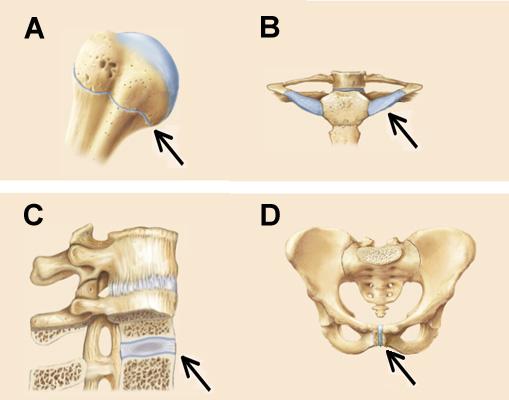 Joints A, B, C, and D in the figures below are all classified as ______. | back 67 cartilaginous joints |
front 68 A fibrous joint that is a peg-in-socket is called a ________ joint. | back 68 gomphosis |
front 69 When a person makes a pinching motion with their thumb and forefinger they are performing a movement called ________. | back 69 opposition |
front 70 Which type of movement occurs at the intercarpal and intertarsal joints? | back 70 gliding movement |